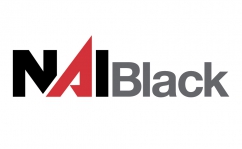Since April 2020, the National Association of Industrial and Office Properties (NAIOP) has been keeping track of the pandemic’s impact on CRE with their regular COVID Impact surveys. NAIOP’s June 2021 survey collected data from 239 US-based members, including brokers, building managers and owners, and real estate developers. A recurring theme in this latest survey was the increasing challenges commercial real estate (CRE) is navigating associated with supply chain disruptions and materials costs.
Supply and delay
With more than 86% of developers reporting delays or materials shortages, it seems the impact of COVID on supply chains is set to become one of the longest-lasting effects of the pandemic. Adding to difficulties, 66% of those surveyed reported delays in permitting and entitlements, a figure that hasn’t changed since June 2020.
Fixtures and equipment for stores are also in short supply, with order backlogs stretching into months for some retail sectors. While this isn’t necessarily surprising, given setbacks in manufacturing in key suppliers such as China, the CRE market shows promising signs of being on-track for continued recovery nonetheless.
Development despite setbacks
Despite the issues highlighted in the report, the survey still showed an increase in retail prospects. New acquisition of existing retail buildings was indicated by 39.1% of respondents, while 31.3% mentioned new development going ahead. Both of these figures represent a strong improvement from a previous survey in January. Deal activity was also noted to be on the up, with figures doubling for office and retail properties over the course of a year, and industrial deal activity increasing over 20% since June 2020.
“Bricks and clicks”
International industry players have also noted that, though larger spaces are still facing delayed rental uptake, 20,000-30,000 square-foot sites are garnering increasing interest. The potential for these spaces is as part of a multichannel retail/warehouse approach – the “bricks and clicks” strategy. As the demand for online retail increases, logistic assets, and storage spaces become more valuable, contributing to an overall uptick in both virtual and brick-and-mortar marketplaces.
A promising prognosis
Even with the supply chain challenges facing the industry, the Federal Reserve agrees with the trend data gathered from NAIOP participants. In their June 2021 Beige Book, the Fed noted upward movement in industrial output and consumer demand. Though economic gains were noted to be slow, the outlook remains steady and positive.
President and CEO of NAIOP, Thomas J. Bisacquino, puts it like this: “The materials and supply chain issues are lagging effects of the pandemic, and they are affecting every industry. While the pandemic’s impact was deep, there’s a sense of optimism among NAIOP members, with deal activity rising and an increase in people returning to offices, restaurants and retailers.”






